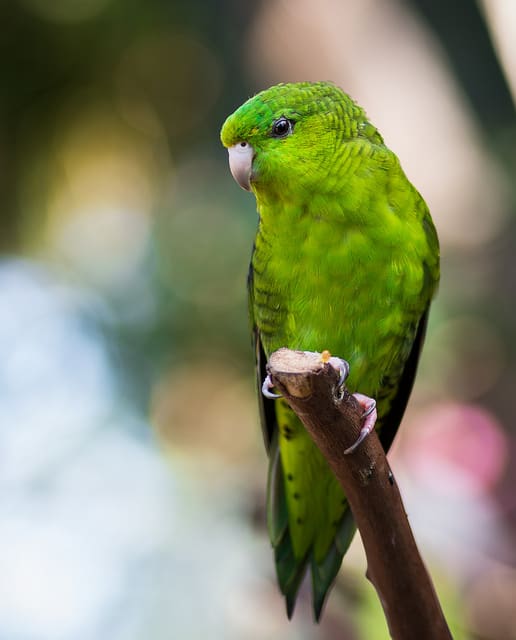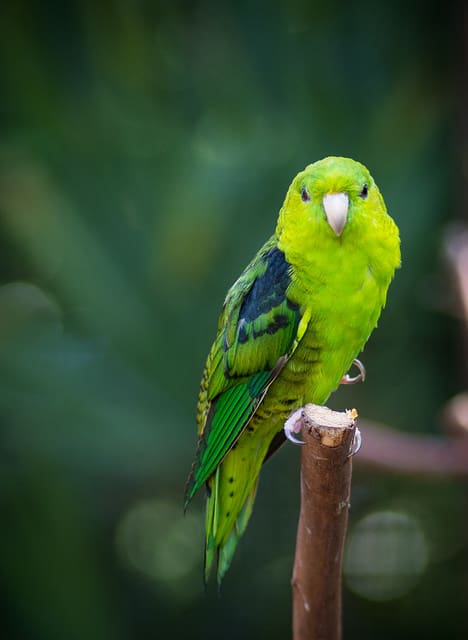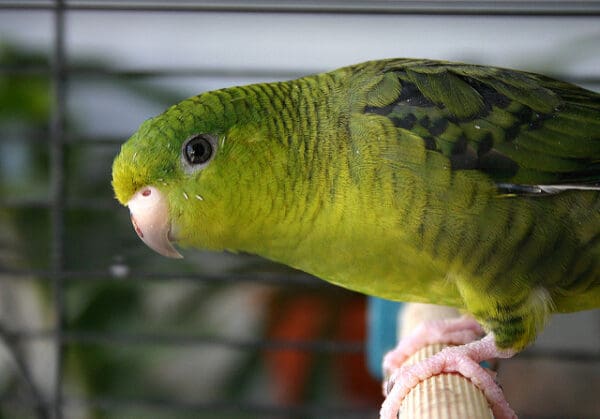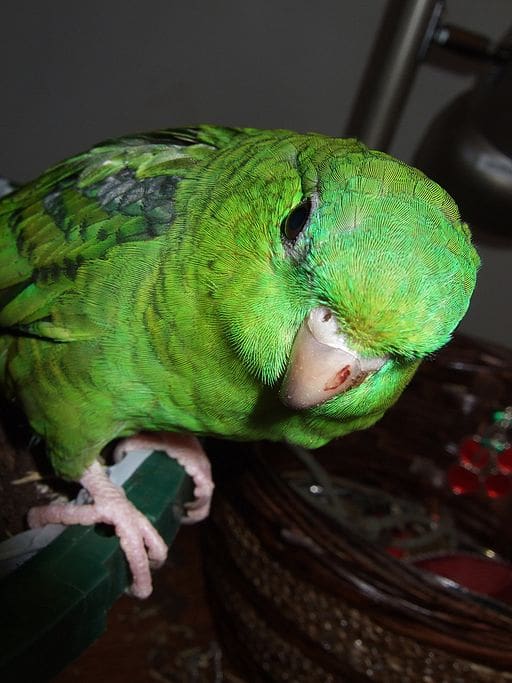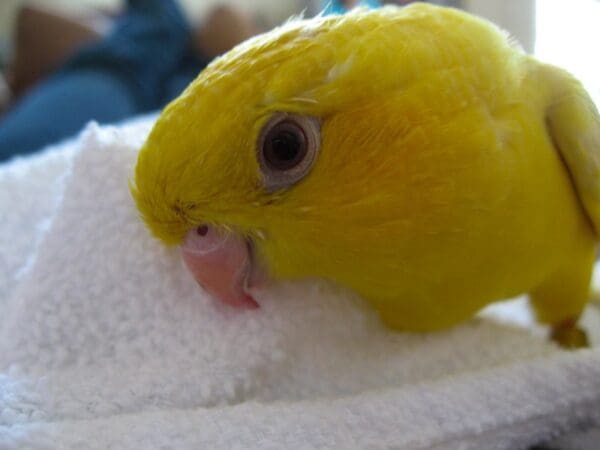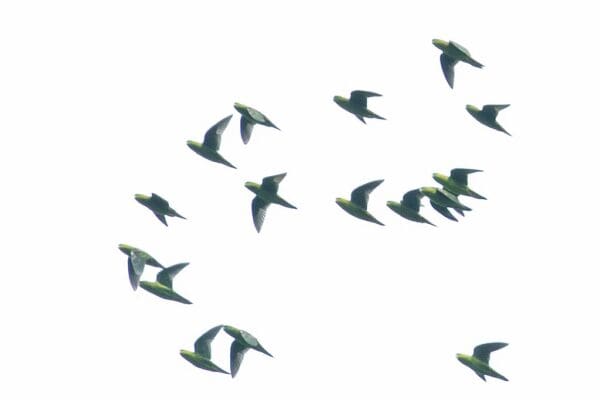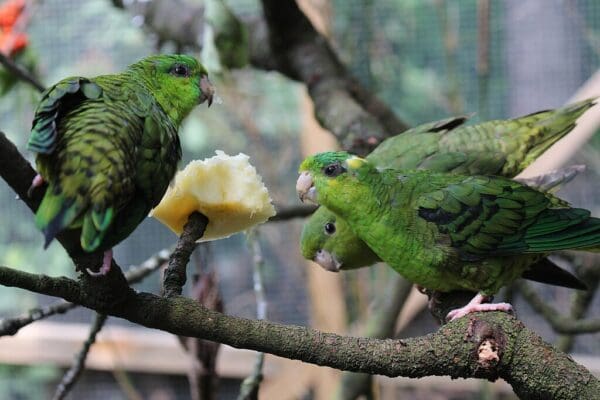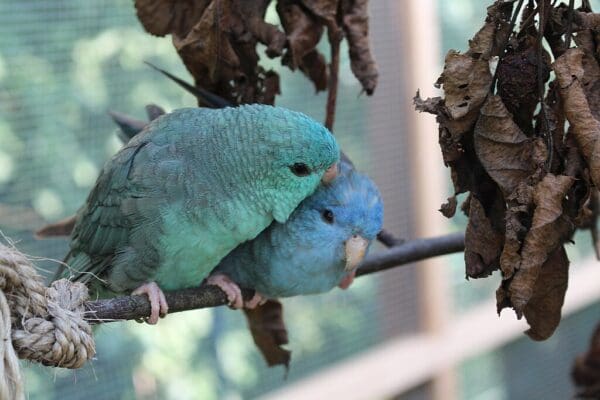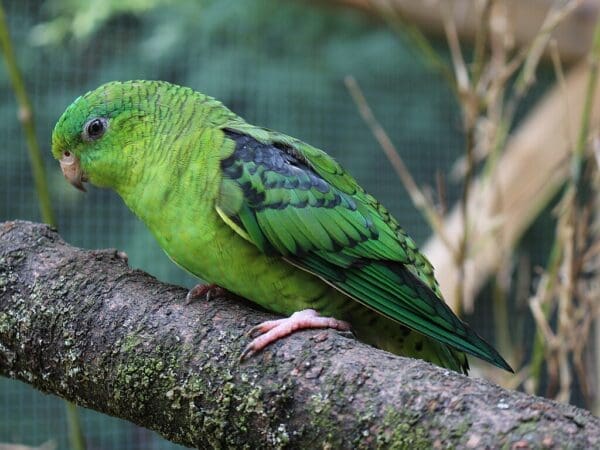Barred Parakeet
Also known as:
Lineolated Parakeet, Banded Parakeet, Catherine Parakeet
Also known as:
Lineolated Parakeet, Banded Parakeet, Catherine Parakeet
![© Viv Lynch [CC BY-SA 2.0] via Flickr A Barred Parakeet perches on a branch](https://gt2024.parrots.org/wp-content/uploads/2023/01/wpt_Barred-Parakeet_1362-6-100x100.jpg)
![© Viv Lynch [CC BY-SA 2.0] via Flickr A Barred Parakeet perches on a branch](https://gt2024.parrots.org/wp-content/uploads/2023/01/wpt_Barred-Parakeet_1362-7-100x100.jpg)
![© Deanna [CC BY-SA 2.0] via Flickr A companion Barred Parakeet perches in a cage](https://gt2024.parrots.org/wp-content/uploads/2023/01/wpt_Barred-Parakeet_1362-5-100x100.jpg)
![© Lisa Lenscap [CC BY-SA 2.0] via Wikimedia Commons A companion Barred Parakeet peers into the camera](https://gt2024.parrots.org/wp-content/uploads/2023/01/wpt_Barred-Parakeet_1362-1-100x100.jpg)
![© Caseyc (Own work) [Public domain] via Wikimedia Commons A companion lutino Barred Parakeet snuggles in a towel](https://gt2024.parrots.org/wp-content/uploads/2023/01/wpt_Barred-Parakeet_1362-100x100.jpg)
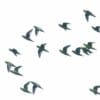
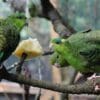
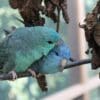
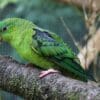
DID YOU KNOW?
The Barred Parakeet has many colour mutations.

Bolborhynchus

lineola
Size:
16 cm (6.2 in)
Weight:
42-52 g (1.5-1.8 oz)
Subspecies including nominate:
two: B.l. lineola, B.l. tigrinus
Colour Adult:
B.l. lineola: Male-in general green in colour; black barring on upperparts except for crown; olive/green flanks and sides of breast with black/green barring; black bend of wing; blue/green underwing coverts and undersides of flight feathers; dark green tail, the centre feathers widely edged with black. Beak pale horn in colour tinged with pink. Eye dark brown. Female-narrower black barring on upperparts; very narrow black edging to centre tail feathers.
B.l. tigrinus: Both adults darker green, with stronger black barring.
Colour Juvenile:
B.l. lineola: Paler and fainter barring than in female.
Call:
Calls are soft, but far carrying notes on an ascending scale; in chorus by flocking birds. Alarm call is series of slurred notes prior to taking flight. Also nasal chattering heard while feeding.
More Information:
Content Sources:
CITES
BirdLife International
Cornell Lab of Ornithology/Birds of the World
Parrots: A Guide to Parrots of the World, Juniper and Parr, 1998
Parrots of the World, Forshaw, 2006. 2010 edition
Lexicon of Parrots, Thomas Arndt.
Parrots in Aviculture, Low, 1992.
Parrots: Their Care and Breeding, Low, 1986.
Captive Status:
Quite common in parts of Europe, less so elsewhere.
Longevity:
15+ yrs
Housing:
Enclosure or aviary, indoors or outdoors (in warm climate), minimum length 1.2 m (4 ft).
Diet:
Small seed mix such as: canary, millet and smaller amounts of oats, buckwheat, safflower and a little hemp; limited sunflower seed; spray millet; green leaves such as: Swiss chard, lettuce, sowthistle, dandelion, chickweed; seeding grasses; rearing food made from hard-boiled egg, wholegrain bread and carrot, all ground to crumbly consistency; nectar as a treat; complete pellet.
Enrichment:
Likes to climb so provide numerous perches, swings, ropes and ladders; puzzle/foraging toys, some chewable toys such as heat-sterilized pine cones, wooden and vegetable tanned leather toys. Also provide shallow water bowls for bathing.
Nest Box Size:
Diagonal nest box 10″ x 6″ x 6″ ( 25.4 cm x 15 cm x 15 cm) or vertical box 7″ x 7″ x 12″ (17.8 cm x 17.8 cm x 30.5 cm).
Clutch Size:
3-6
Fledging Age:
5 weeks
Hatch Weight:
—
Peak Weight:
—
Weaning Weight:
—
World Population:
50,000-500,000, stable.
IUCN Red List Status:
Least Concern
CITES Listing:
Appendix II
Threat Summary:
Low risk to wild populations at present.
Range:
B.l. lineola: S Mexico south to W Panama.
B.l. tigrinus: NW Venezuela and Colombia south to C Peru.
Habitat:
Found from 1500-3000 m (4920-9840 ft) in montane forests in subtropical zone, humid evergreen forest, pine forest, dry open woodland, clearings and pastures with tall trees.
Wild Diet:
Eats catkins, bamboo seeds and plant material/fruit from Myrtis, Heliocarpus and Miconia sp.
Ecology and Behaviour:
Sometimes forages in cultivated areas for maize. Social; forms large communal roosts in tops of tall trees. Seen in smaller groups or pairs during dry season.
Clutch and Egg Size:
4-5 eggs
Breeding Season:
December, Panama; July-August, Colombia. Nest is likely a tree cavity.
Related Links:
—
